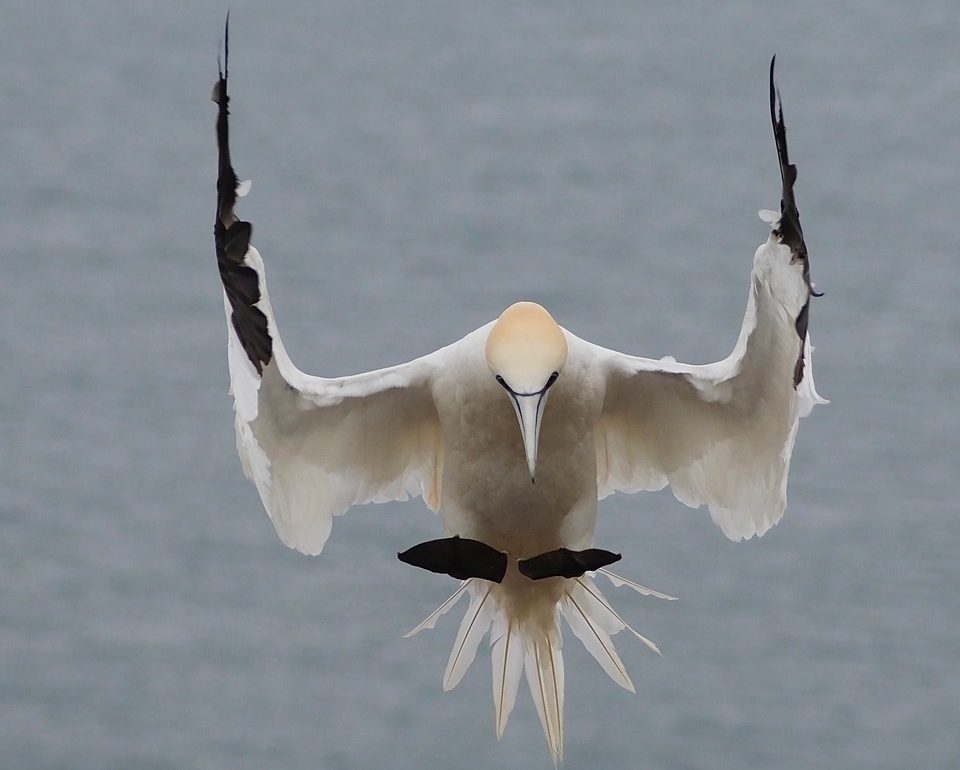
Seabird cities are always spectacular. The sight, the sound and the smell, coupled with the sheer spectacle of seeing so many birds at once, makes viewing a big seabird colony an avian experience that can’t be compared with any other. Here in the British Isles we are lucky enough to have some of the largest and most important seabird colonies in Europe. We have around two thirds of the world population of Gannets, along with internationally important numbers of Guillemots, Puffins, Razorbills, Kittiwakes and Fulmars.
These birds are all cliff nesters. Alas, East Anglia, where I live, isn’t an area renowned for its sea cliffs, so to visit a major seabird colony I have to drive either west (the coast of West Wales has some superb colonies) or north. My closest colony is in North Yorkshire, at Bempton Cliffs. It’s almost 200 miles from home, or rather more than a four-hour drive, given clear roads and no delays (unusual in this overcrowded island). Earlier this month I made the pilgrimage north, my first for many years. It was worth the effort.
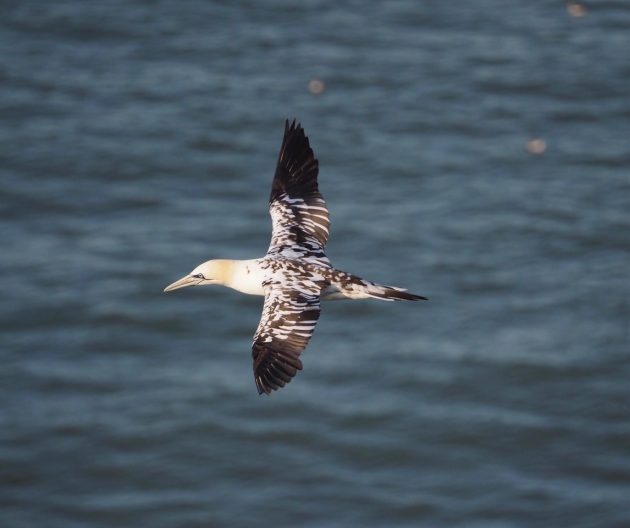
A handsome young Gannet. A few immature birds can be seen around the colony, but they don’t nest until they are four or five years old
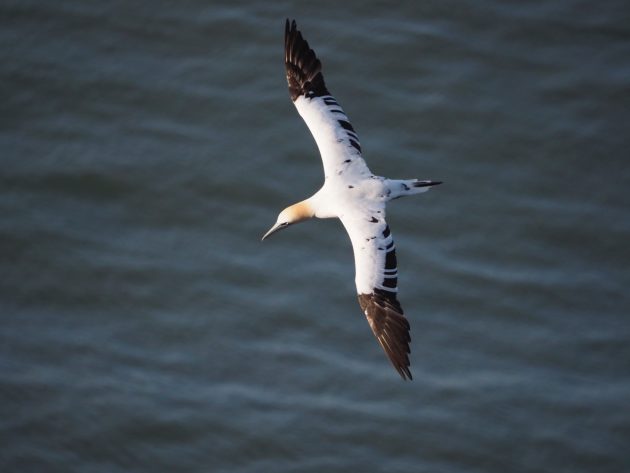
Gannets take four years to reach full adult plumage, so this bird is improbably three years old
I saw my first Gannets of the year off the coast of North Norfolk on a cold and windy January day. A month later I had the chance to watch these impressive birds again, fishing off Cape Trafalgar in southern Spain. But these were distant views, and nothing like the close encounters I had at Bempton, an RSPB reserve. The great white chalk cliffs of Bempton would be impressive enough without the gannets, but add in more than 10,000 pairs of gannets, and around 200,000 auks and Kittiwakes and you have one of the greatest wildlife spectacles in Britain.
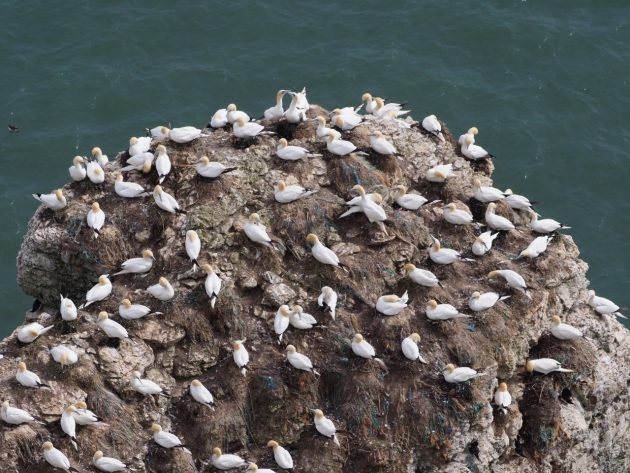
Bempton holds the only mainland colony of Gannets in Britain
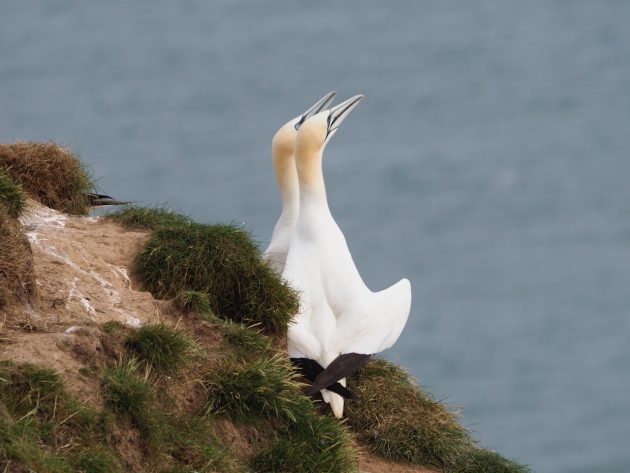
A courting pair
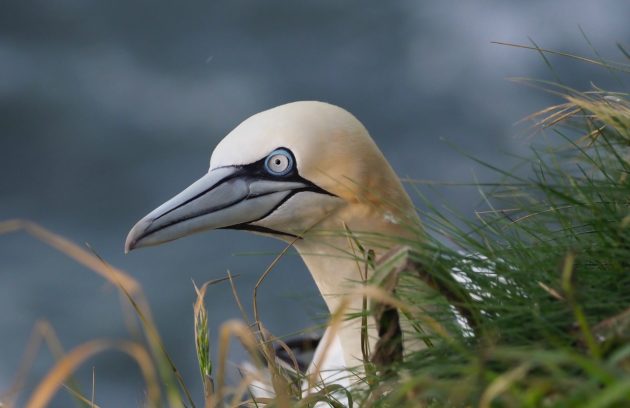
Gannet portrait – a steely look?
Bempton’s gannets are fascinating, as the first-known nest on the cliffs here was recorded a century ago, in 1924. Nobody knows whether the single pair bred successfully – it seems unlikely that they did – but they were present throughout the summer. It wasn’t until 1948 that young Gannets were proved to have fledged at Bempton for what was probably the first time. The colony built up slowly. In 1977 there were 169 nests, from which 153 young hatched and 145 young eventually flew. Numbers grew steadily in the next 40 years, and it seems likely that they have now peaked. There are two reasons for this. One is bird flu, to which Gannets are particularly vulnerable, and the other is that there are no vacant ledges left for the birds to nest on. Incidentally, there have been no recorded cases of bird flu at Bempton this year.
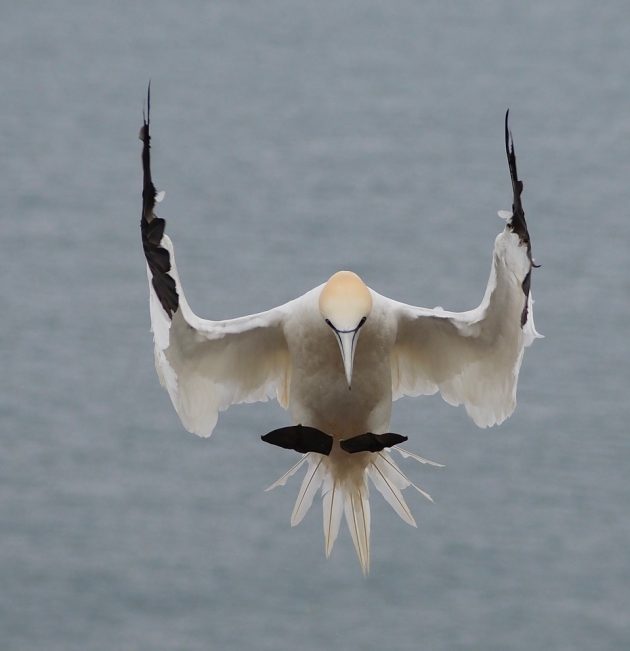
Preparing for the perfect landing
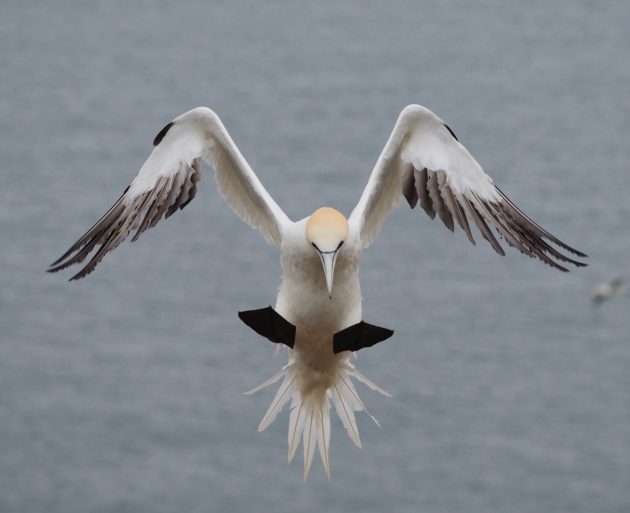
Brakes on, landing gear down
The Gannets are present at Bempton from the end of February through to October, for their breeding season is an exceptionally long one. At the time of my visit in early June the ledges were crowded with them, many of whom were still nest building, flying to the tops of the cliffs to grab clumps of damp grass. Though highly social birds that like to nest in close colonies, they also indulge in fierce arguments with their near neighbours, while stealing nesting material from the pair next-door is standard practice. They don’t nest until they are at least four or five years old, when they finally acquire full adult plumage, with the female laying just a single egg that takes 44 days to hatch. It’s then another 90 days before the youngster is ready to fly.
It’s rare to see the Gannets fishing close to the nesting cliffs, as their favoured prey are big fish such as Cod, Mackerel and Herring that are found in deeper waters farther offshore. What you do see are long lines of Gannets, setting off to the North Sea to fish.
Bempton is the only mainland colony of Gannets in the British Isles; all the other colonies are on islands. The largest colony is on the island of St Kilda, far off the coast of West Scotland. There the young birds were once harvested by the islanders for food. After being killed they were plucked and salted for consumption during the winter. Records show that as many 20,000 young birds were taken every summer. I hate to think what they tasted like.
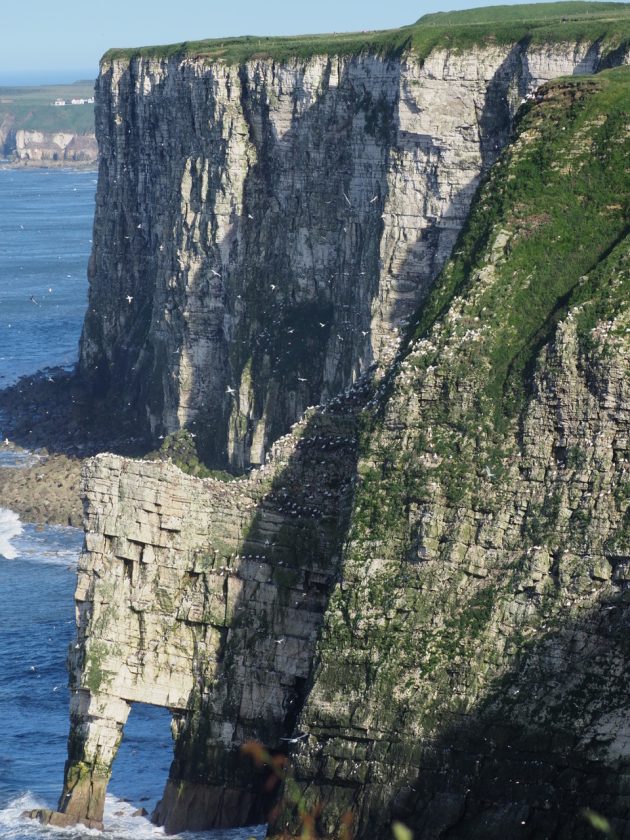
Bempton’s towering chalk cliffs hold the biggest mainland seabird colony in England
The last inhabitants of St Kilda left nearly a century ago, so it seems likely that spared the annual cull, numbers of Gannets grew and were able to spread to new colonies. Gannets have also benefitted from the European Union’s fisheries policies, which led to huge numbers of fish being discarded because they were the wrong size or species. Such a bountiful source of food was appreciated by the Gannets.
Though Gannets may be the birds that demand your attention, the supporting cast of Guillemots, Razorbills, Puffins, Fulmars and Kittiwakes are equally fascinating. For centuries their eggs were harvested by locals, known as Climmers, who would use ropes to climb down the cliffs to gather the eggs, a highly dangerous way to make a living. There were typically four teams of Climmers at Bempton, with each team taking 300-400 eggs a day. Most were taken for eating, but a valuable trade developed in selling unusually marked eggs to egg collectors.
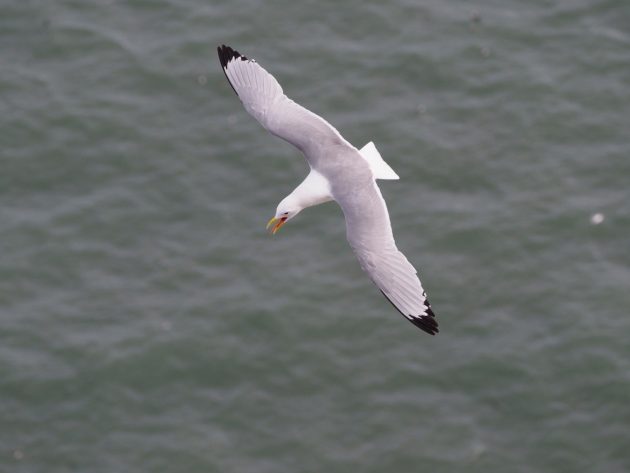
Kittiwakes are the noisiest of Bempton’s cliff nesters
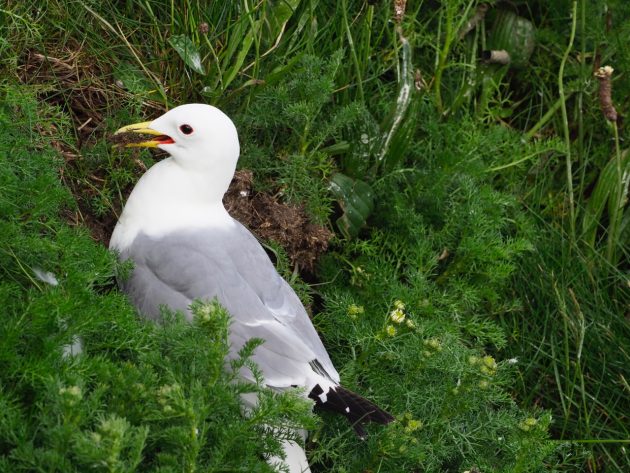
A Kittiwake collecting grass for its nest
Today, thanks to protection, the Climmers are no more, and the auks and Kittiwakes nest unmolested. The Climmers took far more Guillemot eggs than those of Razorbills, for the latter chose less accessible nest sites. The Guillemots pack on to the ledges, shoulder to shoulder. There are plenty of Puffins at Bempton, too, but this isn’t one of the best places to see them. Any photographer aiming to capture pictures of Puffins is recommended to go father north, to the Farne Islands off the coast of Northumberland.
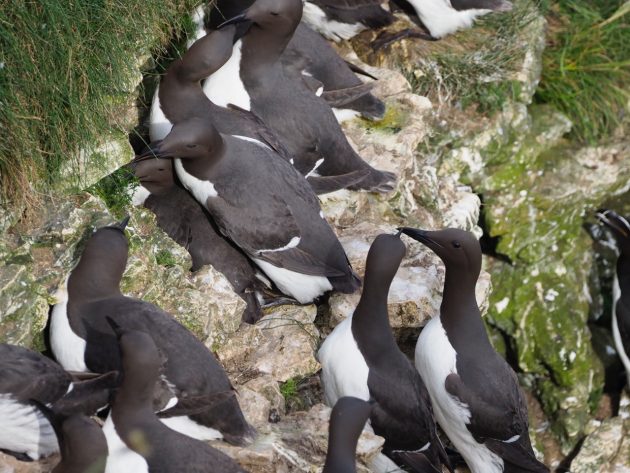
Guillemots crowded onto a nesting ledge
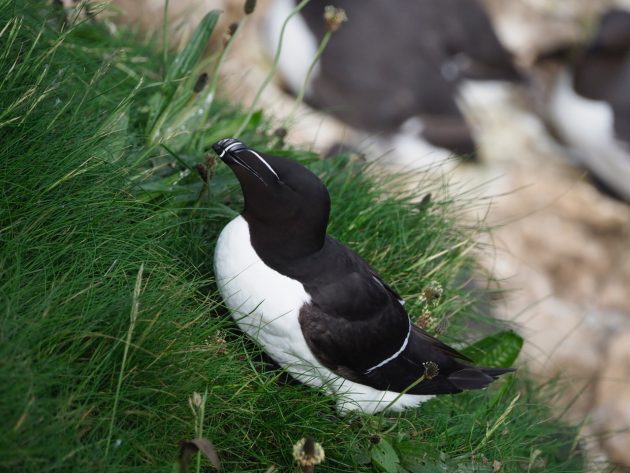
Several thousand pairs of Razorbills nest at Bempton
Today Bempton attracts considerable numbers of birdwatchers, photographers, and people just interested in seeing one of nature’s greatest spectacles. I enjoyed every minute of my visit, and am puzzled why I hadn’t been for so many years.
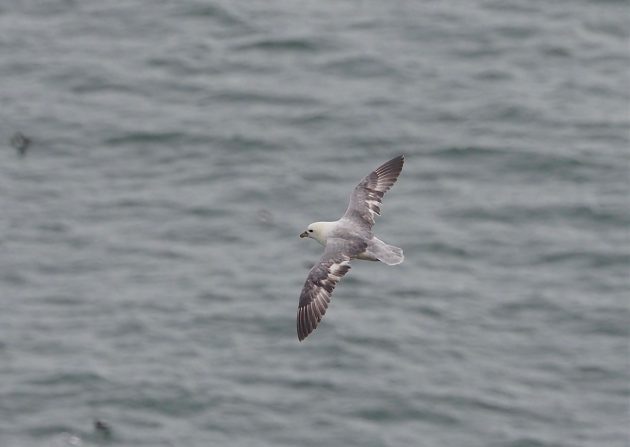
Small numbers of Fulmars nest on the cliffs













Great photos! /Especially the “landing” and “landing gear” ones.